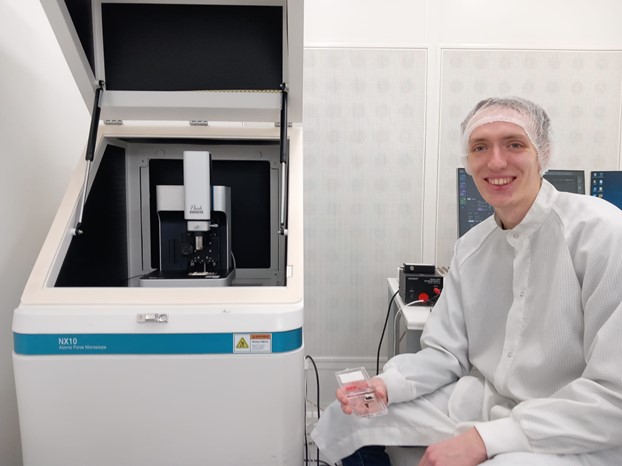
Jori Schmidt is currently enrolled as a master’s student at the Technische Universität Dresden, where he also received his BSc. Degree in the group of Prof. Lukas M. Eng. The title of the thesis was “Towards 3D magnetic force microscopy”, where he used the NX10 AFM by Park Systems to experiment with a new way of performing lateral MFM measurements. Currently, he is continuing his investigations into magnetic domain imaging.
1. Please summarize the research you do and explain why it is significant?
I have performed magnetic force microscopy and shown that using a custom tip-holder, it is possible to use a torsional cantilever oscillation to image in-plane magnetic field components. This signal is sensitive to the in-plane directions of the magnetic stray field and can therefore provide more information about it. It was even possible to simultaneously record a conventional MFM signal at the same time by exciting the cantilever in both its flexural and torsional modes simultaneously.
2. How might your research be used?
One goal would be to better understand the nature of more complicated magnetic structures, such as skyrmions and antiskyrmions.
3. Why is the Park AFM important for your research?
It makes it easy to experiment with new imaging modes due to its flexible IO and software. The conventional MFM imaging mode works very well and is a great foundation to build upon.
4. What features of Park AFM are the most beneficial and why?
The IO module which lets the user get access to all signals of the AFM and allows external control of some functions made implementation of the new imaging mode very easy. Via the aux-inputs, external signals can be read in as a custom data channel which is very helpful. In the software, the options to change parameters during the second pass (such as turning off the NCM drive) also proved useful.
